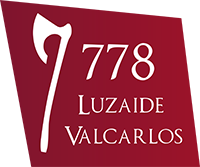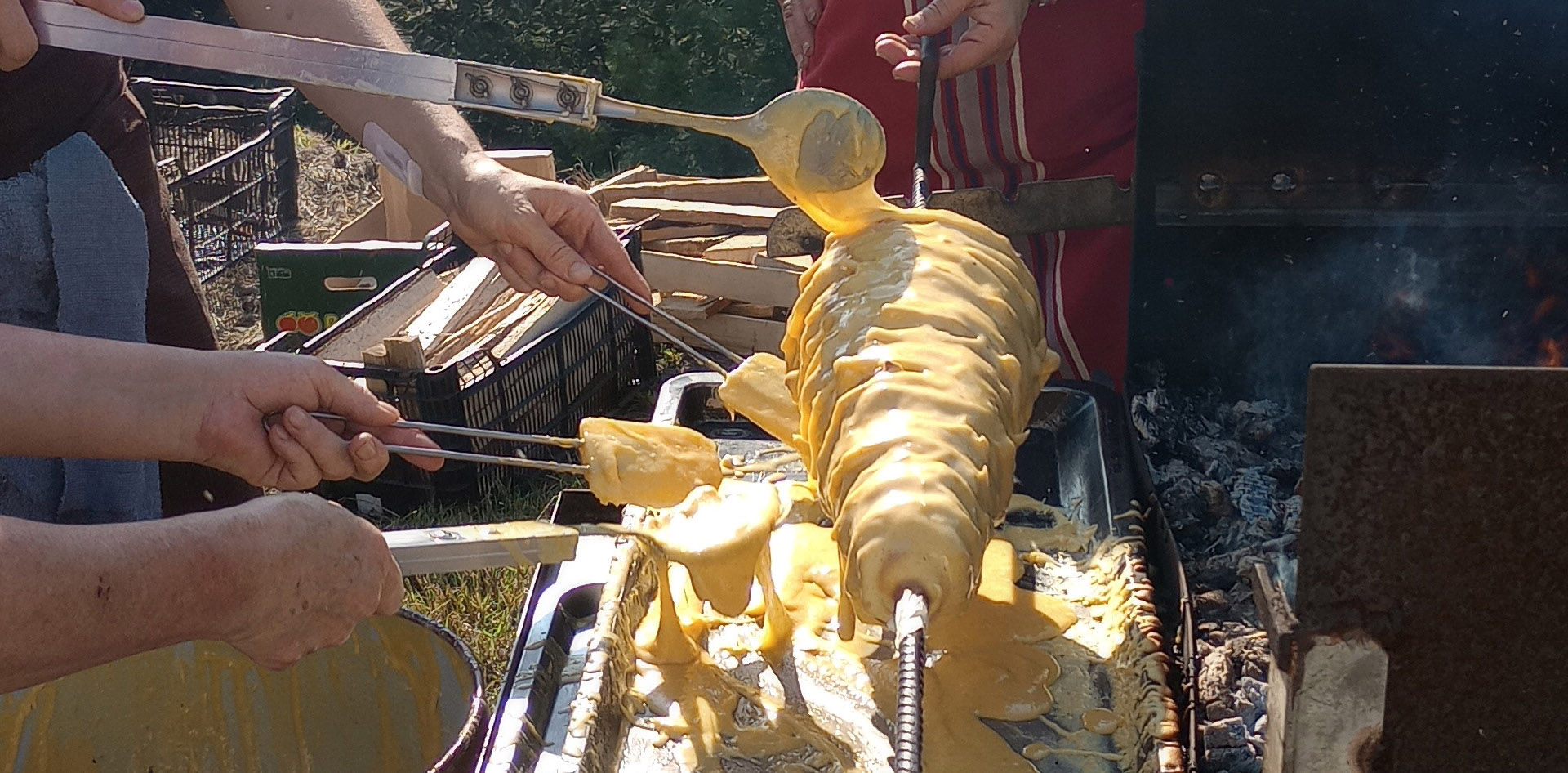Among the foods on display throughout the kitchen, ‘katalanbrotx’ (from the French gateau à la broche) stands out. It is a cake prepared on a wooden cone placed horizontally next to a wood fire, to which the dough is added in layers while the cone is rotated, thus baking it slowly. The process is repeated for hours, until a conical tower is formed. The basic ingredients are almonds, eggs and sugar. It is decorated with pine nuts and topped with an apple. In the olden days, it was a staple at every wedding.

Don’t miss this video, where you can see the traditional process of making it in detail.
‘Marrakukuak’ or ‘marrakukus’ are those yellow balls we see on the fire grate. They are made by baking a thin corn cake or ‘talo’ over the fire, adding a piece of fresh cow’s cheese and wrapping it up into a ball. It is then placed back on the fire until the cheese melts. The Goñi sisters from the Cossin house in Gañekoleta remember the ‘marrakukus’ their mother used to make and line up on the mantelpiece: “they were delicious”.
During carnival season (‘ihaateri’), crepes and ‘kauseras’ are made. The crepes we see on the table are made with egg, milk and a little flour. They are made by forming a thin film on the bottom of the pan at the right temperature and then rolling them up, either on their own or with cream inside. They are served with sugar.
‘Kauseras’ are the fritters we see on the table. These vary depending on the aromatic ingredients and the skill of the baker. Many people cannot wait for carnival season to arrive and start preparing these foods as early as January.
Santiago also has plenty of ‘rosquillas’, a typical pastry from Luzaide/Valcarlos, which we can also see displayed on the folding table.


